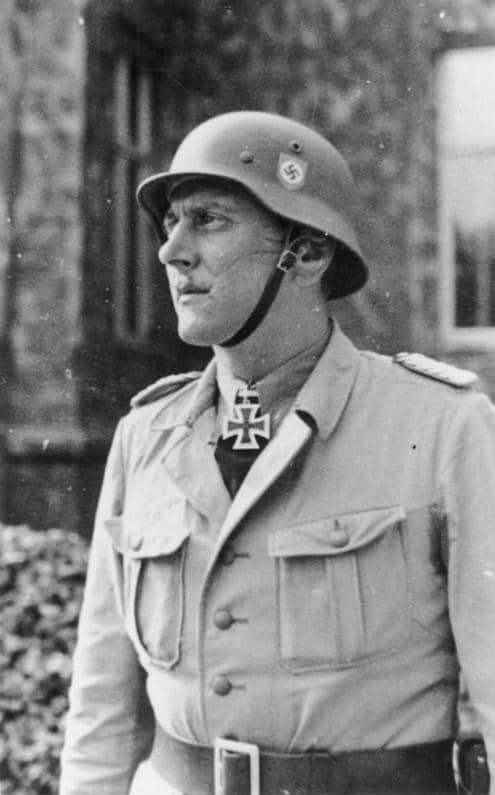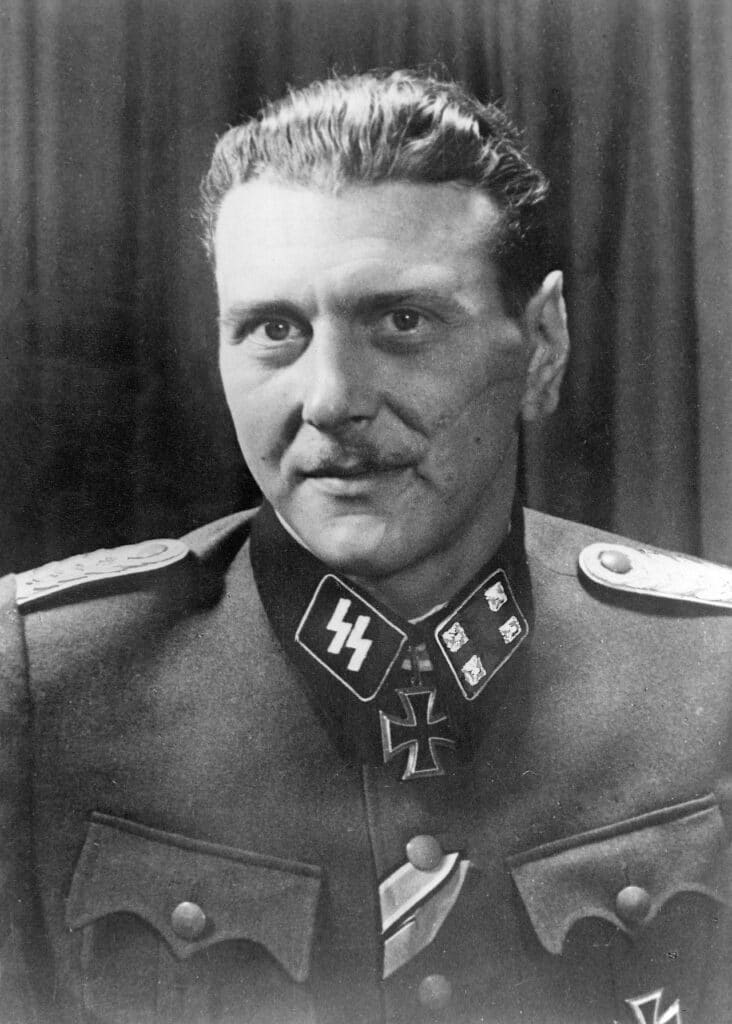Last updated on January 25th, 2023 at 12:45 am
One would think that of all the senior members of the Nazi regime, someone like Adolf Hitler, the leader of the Nazis, or Heinrich Himmler, the head of the SS, would have been deemed ‘The most dangerous man in Europe.’
But that wasn’t the case. By the end of the Second World War in 1944, the man who earned this monicker was Otto Johann Skorzeny. So who was he, and how did he earn this title?

The Early Life of Otto Skorzeny
Otto Skorzeny was born in Vienna in 1908. The Skorzenys were a military family. Otto took up fencing from a young age, a pastime that left him with a dramatic scar on his left cheek after being sliced in a bout while in university.
In 1932 he joined the Austrian branch of the Nazi Party. Following the German annexation of Austria in March 1938 and the outbreak of the Second World War the following year, he volunteered for German military service.
Eventually, he ended up in the Waffen-SS and training to become part of Adolf Hitler’s bodyguard. He then served on the Eastern Front in Russia in 1941.
Skorzeny’s time in the military might have remained fairly unremarkable had it not been for Ernst Kaltenbrunner, a fellow Austrian Nazi, appointed as head of the Reich Security Main Office early in 1943 in succession to Reinhard Heydrich who had been assassinated the previous summer.
Kaltenbrunner knew Skorzeny and promoted him to become the head of a Special Operations unit trained to engage in sabotage missions and espionage as the Allies went on the offensive against Nazi Germany in 1943. It was a promotion that would make Skorzeny infamous.
Rescuing Benito Mussolini
The first mission Skorzeny led, garnered widespread attention, and occurred on the 12th of September 1943. It was codenamed Operation Oak but is more widely known as the Gran Sasso Raid.
The objective was to free Benito Mussolini, the fascist dictator of Italy since 1922, from the house arrest he had been placed under by the Italian government.

Following the Allied invasion of Sicily in the summer of 1943, the fascist government in Rome had decided that Mussolini was no longer fit to lead Italy. Thus, they removed him from power and placed him under arrest before entering into surrender negotiations with the Americans and British.
But Hitler was determined to maintain control of Italy. So he sent German troops into the country and then commanded Skorzeny to oversee a mission to rescue Mussolini, who was being held on a mountaintop hotel at Gran Sasso near Rome.
Skorzeny’s special operatives struck on the 12th of September, landing at Gran Sasso after paragliding onto the mountain. In a rescue which even the British leader, Winston Churchill, admitted was ‘one of great daring,‘ Mussolini was rescued.
He was then taken to northern Italy, where he was installed as the head of a new Italian government which was effectively a German puppet state in the town of Salo.
Other Operations
Several other missions were planned or carried out by Skorzeny in the year and a half that followed, notably an abortive mission to try to assassinate the three main Allied leaders, Winston Churchill, Joseph Stalin, and Franklin Delano Roosevelt.
This was not realized, but Operation Greif was in December 1944. This mission was undertaken as part of the Battle of the Bulge that winter, a German counteroffensive against the Allies in the Ardennes Forest of Belgium and Luxembourg.
Skorzeny organized units of German troops who disguised themselves as American soldiers and went behind enemy lines from mid-December onwards.
They caused chaos in the days that followed. In some instances, they turned signposts the wrong way around and sent the Allied forces in the wrong direction.

The soldiers, who could all speak English and had passable American accents, even approached brigades of American troops and told them they had orders to retreat.
Within days the Allies knew that they had German soldiers in their midst, which caused even further chaos as excessive identity checks saw Allied generals arrested by their men on suspicion that they might be the German troops.
Finally, in early 1945 Skorzeny was placed in charge of organizing a plan to continue to fight the Allies even after the war ended. However, this was abandoned as the Nazi leadership began to commit suicide in Berlin in late April 1945. The war concluded days later.
Otto Skorzeny’s Later Life
Following the end of the Second World War, Skorzeny was put on trial by the International Military Tribunal, which prosecuted Nazi war criminals in the city of Nuremberg throughout the second half of the 1940s.
He was, however, acquitted following the testimony of a British Special Operations officer who stated that he would have acted in much the same way Skorzeny had in the Gran Sasso Raid and Operation Greif and that British forces had also sent their troops behind enemy lines dressed as Germans.
A second trial was pending in 1948 when he absconded from a detention center.
His final years were variously spent in Spain, where he was sheltered by the fascist government of General Francisco Franco, Argentina, where the government of Juan Peron sheltered many Nazis after the warm, and Ireland, a country which had been neutral in the war and which had a deeply antagonistic relationship with Britain.
Rumors abounded throughout these years that he had facilitated the escape of Nazi war criminals from Europe to South America and that he contradictorily aided the Israeli intelligence service, Mossad, in hunting down Nazis who were involved in the Holocaust of Europe’s Jews. He died on the 5th of July 1975 at 67 years of age. He was cremated, and his ashes were returned to Vienna.
Sources
Charles Whiting, Skorzeny: “The Most Dangerous Man in Europe” (New York, 1998).
Greg Annussek, Hitler’s Raid to Save Mussolini (New York, 2005).
Jean Paul Pallud, David Parker and Ron Volstad, Ardennes, 1944: Peiper and Skorzeny (London, 1987).

